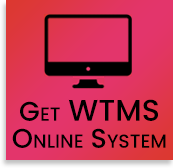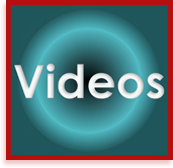
HOW VISUALITY ALIGNS: THE DIFFERENCE BETWEEN DATA, INFORMATION & MEANING
From sales to design, procurement to planning, fabrication to processing, receiving to pack and ship, and at all points in between, information is the lifeblood of work and all the activities and functions that support work.[su_column size=”2/3″]
In the vast majority of companies, accurate, complete, timely, relevant information is unattainable or simply too hard to come by—and the truth is even harder to locate. That is not to say there isn’t plenty of data. Data abounds. Data can be found everywhere—in quality reports, SPC graphs, management briefings, in team meetings, and weekly and annual reports. Data floods the workplace.
But compiling data is fruitless if the data is not translated into information and the information is not translated into meaning. It is meaning that we are after. Without understanding what information means, we cannot make sound decisions and move the company and the people who work there forward. We cannot perform. We cannot contribute. We are not aligned. The purpose of the visual workplace is to convert data into visual information and then into visual meaning. The result? Precise, repeatable, reliable, aligned, and sustainable performance, even in low-volume/high-complexity work environments.
Visuality Aligns the Culture
Thinking about company conversions, however, merely in terms of tactical outcomes—increased production —is not a broad enough perspective. Yes, the workplace is about safety, quality, delivery, and cost. It is also about building a work culture. It is about people. When we implement workplace visuality, we liberate information–and when we liberate information, we liberate the human will. This is a conversion of a company’s culture on a uniquely powerful level. Culture structures our beliefs and values about two things: power and identity. More specifically, culture reflects how power is used and distributed, and who you think you are and who you think the other person (any other person) is. When we liberate vital information formerly imprisoned in the binders, reports, books, computer files, and data systems of the company—and in the hearts and minds of the[/su_column]
[su_column size=”1/4″ center=”no”]![]()
A willing individual in a company without workplace visuality.
![]()
A bunch of willing individuals in a company without workplace visuality.

The same workforce in a company with workplace visuality—aligned and empowered.[/su_column] company’s information specialists, managers, supervisors, engineers and technicians, and line employees—we liberate ourselves. We understand that the other person is us. And the culture aligns. Information is power. It is also freedom. When we work in a fully-functioning visual workplace, we understand that. Go to work every day in a visual work environment and you cannot help but feel powerful. The information empowers us. We take responsibility. We hold ourselves accountable—because at last we can. We become powerful members of the company’s infrastructure. We become self-leaders.
The New Enterprise
The new enterprise is an inclusionary entity. It is holistic. As such, it functions on multiple levels, not just meeting the company’s daily production goals but also addressing its need for clarity, imagination, community, and alignment. Any effort to make the new enterprise about just one thing—whether production or work culture—is a failed concept unless that one thing is unity itself. The new enterprise, like the human body, must support and express various forms of health—mental, physical, emotional, and, yes, spiritual. It must perform on these multiple levels if it is to remain viable in today’s world. We are on a tremendously accelerated journey to a transformation that we can hardly imagine. There is no way to draw the line from where we are now to our future. While there will certainly be familiar signposts, there will also be much that startles and even confounds. If you haven’t noticed it by now, we are in a revolution, not just in manufacturing, not just in the pharmaceutical industry, not just in offices, governments, banks, and hospitals, and not just in the USA. This revolution is taking place in every aspect of the lives, livelihoods, and industries on this planet. It is a revolution of consciousness—and no industry, no country, no company and no person is exempt. And the liberation of information though workplace visuality is at its core.




